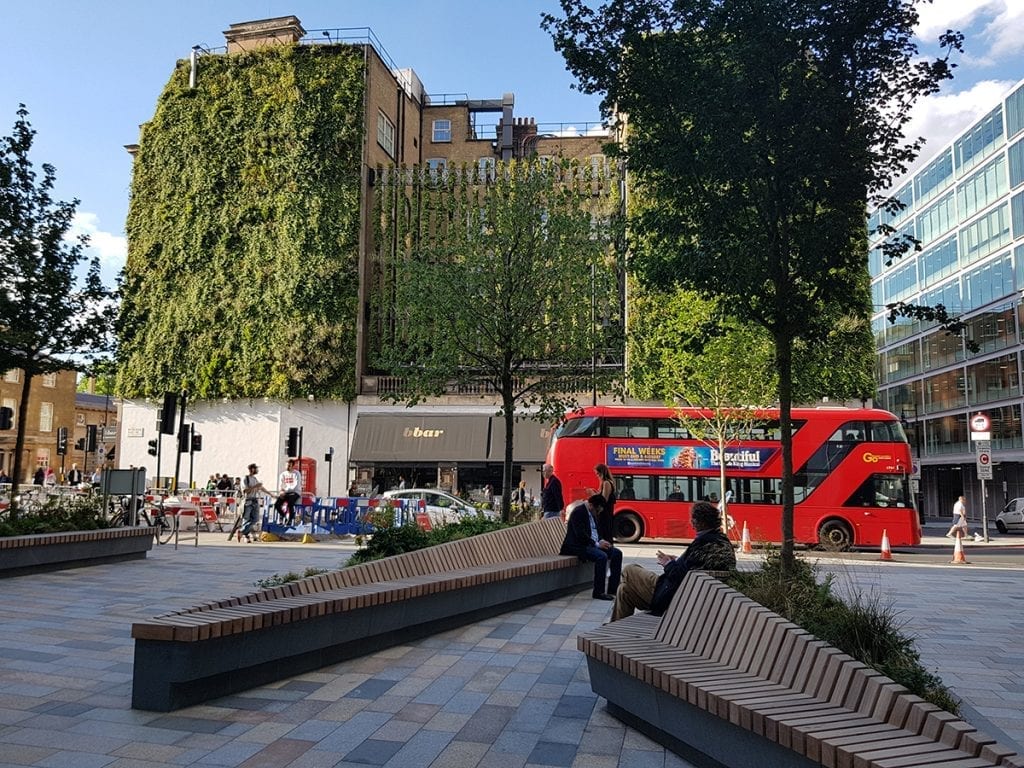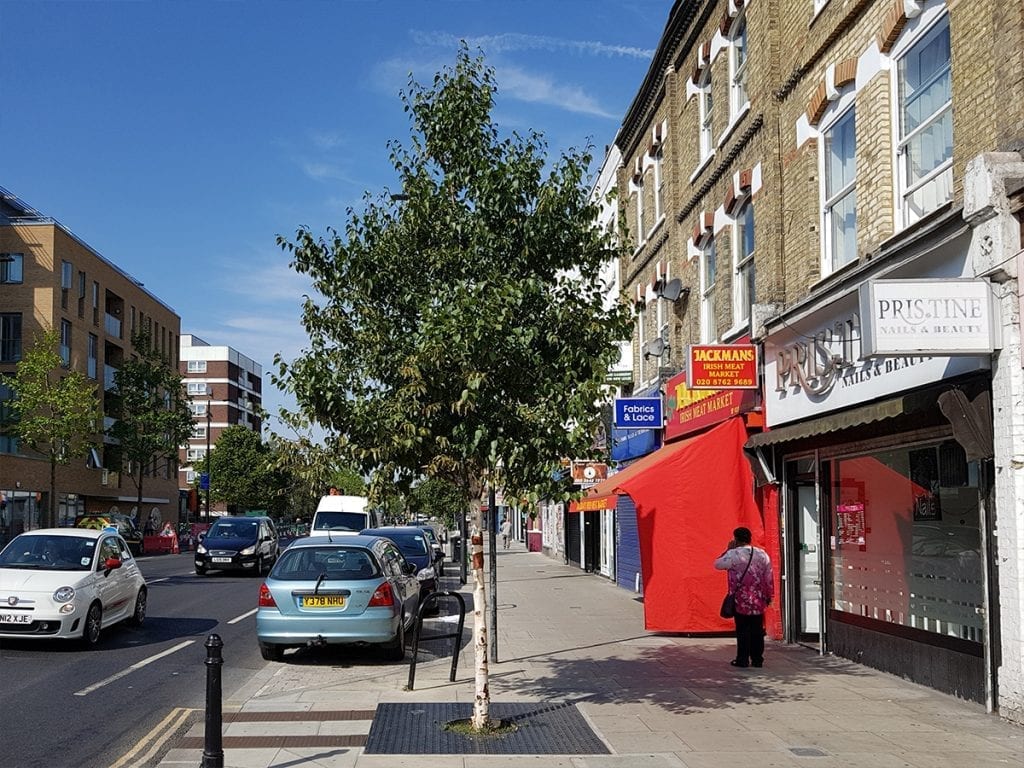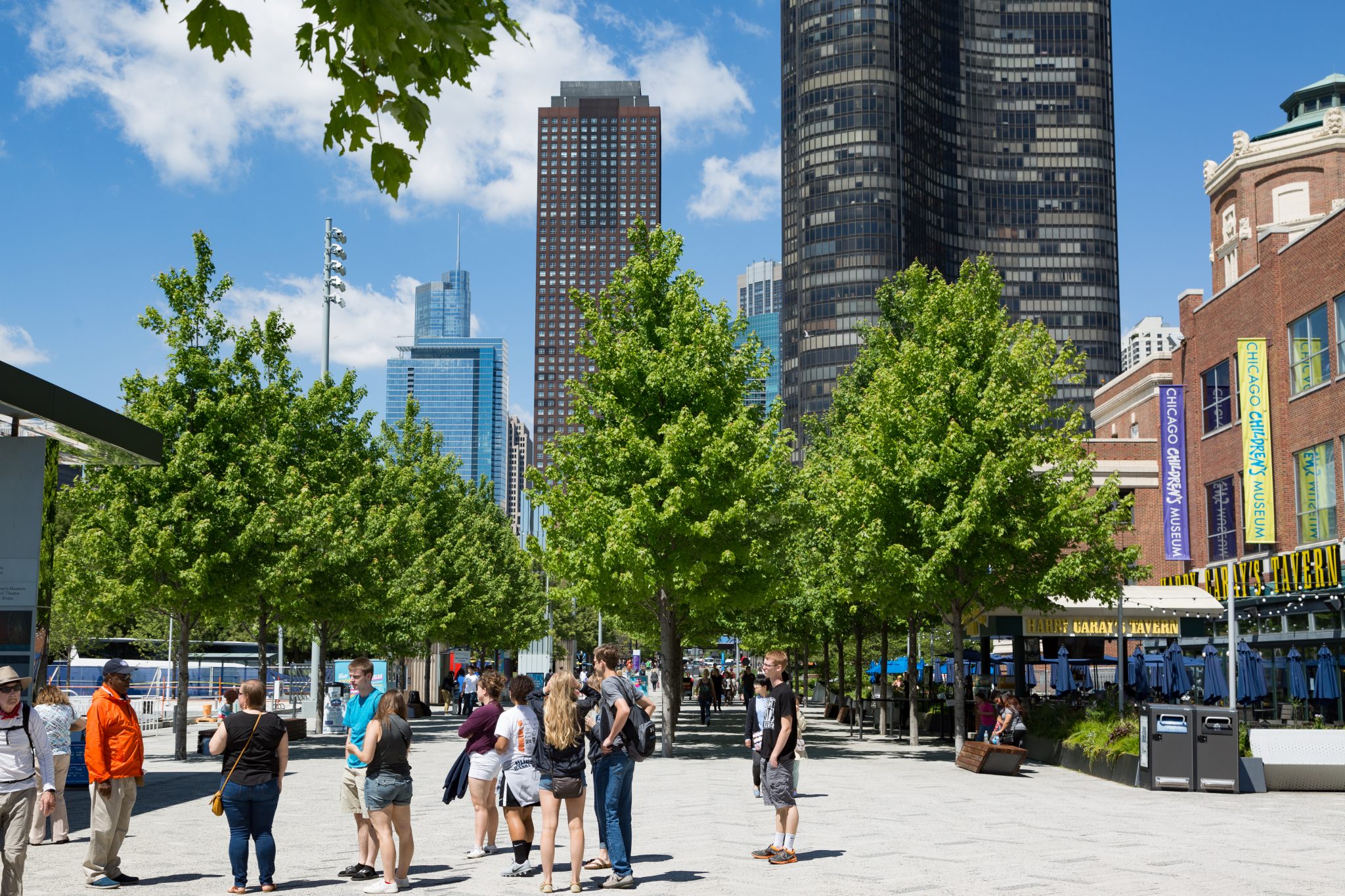There have been a number of publications reflecting the uplift that urban trees and high-quality landscape can achieve when it comes to areas specifically weighted toward retail and commercial use. The work that Treeconomics have undertaken with is a case in point.
The growth of research which tries to quantify and attribute a qualitative value on ‘urban buzz’ and the vibrancy of our towns and cities across the regions, also makes links to investment in the public realm and the response of citizens to the unique landscape of their hometowns.

It became apparent from a recent event GBU attended on cultivating urban buzz, that the interaction between businesses and citizens across social media to generate various kinds of ‘buzz’ is only facilitated through a strong identity with place. Buzz and civic pride are particularly local and investment in the landscape should reflect local character if it is to boost retail and use of city and town centers.
The challenges and opportunities of areas dominated by this particular form of land use are also unique. Oftentimes we are not dealing with large single-use developments and the frequency and type of traffic in and out of these sites, both human and vehicular is a key consideration from the outset.
There are a number of critical aspects that inform the GreenBlue Urban approach to involvement in retail/commercial developments:
- How can independent retailers who are the catalyst for investment and growth globally be supported by enhanced landscaping and protection from stormwater?
- Working with larger retailers to create more resilient and aesthetic out of town retail spaces without the loss of critical space for parking and retail footprint
- Integrating new infill retail with the existing urban realm through a bespoke retrofit approach
Having worked across the world, we at GBU are acutely aware of the economic pressures facing local authorities and independent business in our town centers. Whilst many local authorities produce town center action plans as part of their local planning policy, it is critical to really understand what will create the right environment for business to thrive and why some of our town centers are failing. Many of us would cite online provision for shopping as a rationale for less time spent on the high street but the issues are more complex.
- First and foremost, we have to ask ourselves, how are we entering our town centers – is it pleasant to walk or cycle there? What is the quality of the urban realm in our nearest town center like? Importantly – is this a place that is friendly for the multiplicity of potential users of this space?
So how can landscape and in particular the provision of urban trees feed in to this narrative? - Green/blue corridors throughout town centers to create permeable, legible spaces for users
- Shaded, communal areas for people to spend more time and opportunities for social cohesion
- Providing amenity to draw consumers into these retail spaces and enhancing the ‘café culture’ of town centers
- Protection of business from flooding using SUDs enabled tree pit technology
A Scaled Approach and the Co-Benefits
From the intensive work with the design team that delivered the regeneration of Selfridge’s central London site on Duke Street, to regional urban regeneration schemes, GreenBlue Urban are committed to ensuring that the design and implementation of our innovative tree pits will provide the greater long-term benefits for the retailers and end users alike.

Lititz, Pennsylvania
Defining a downtown, what makes a community vibrant and the character of the commercial and natural landscape requires a bespoke solution and nowhere was this more apparent than in Lititz. Through the innovative use of our systems, the local authority was able to reconfigure their downtown core to breathe life into their local community.

Selfridges and Goldhawk Road
In order to work around the complexities of underground services and utilities, the technical and design team at GBU are there to ensure that urban trees can be integrated where ordinary methods would often not allow for the planting of any trees on the scheme. Our RootSpace system was utilized across the four tree pits on the Selfridges scheme and StrataCell was also used to ensure that the underground obstacles could be surmounted. We faced a similar challenge on Goldhawk Road in Hammersmith and Fulham, a road replete with local, independent businesses. Our SUDs enabled tree pits were a vital buffer when water mains burst on this road at the latter part of 2018, protecting local businesses from flood risk through their ability to hold back the sudden surge of water for a 48 hours recharge rate.

Navy Pier: Chicago, IL
The Navy Pier is a spectacular global destination enjoyed by millions of visitors each year. The redevelopment project was designed to revitalize 50 acres of urban lakefront area, while creating a model of sustainability for the City of Chicago. GreenBlue Urban’s ArborSystem was used in the development of the area to ensure healthy urban tree growth while still supporting the load-bearing requirements of the area. The waterfront transformation has turned the Navy Pier’s outdoor landscape into a vibrant setting for recreation and social life.

Middelburg, NL
Greenspaces do not always provide the amenity value and benefits we would hope for the footprint they occupy within towns and cities and our mission and GreenBlue Urban is to engage in landscape interventions which result in tangible uplift to the quality of the sites. Whilst there are many ways of measuring these benefits and metrics that can be used to make the business case for investment in urban parks and green spaces, some of the most compelling cases come from the old fashioned methods of observing changes in behavior and to engage in meaningful dialogue with businesses in proximity.
Working on an EU Interreg programmer Water Resilient Cities we were able to learn from Dutch partners how effective engagement with the community, tracking their existing shopping behavior and understanding how the residential areas connected to commercial centers could inform the ways in which green spaces could be re-imagined to provide the best routes to and from the shops.

In conclusion, it is clear that retail spaces present a complex challenge when it comes to urban tree planting. However, it is clear that visualizing space beyond the tree pit system itself, considering the scope and the ambition for change is at the heart of each successful project we have been involved in. Lost opportunities are apparent in all our major city center and smaller retail spaces but it need not be the future.

